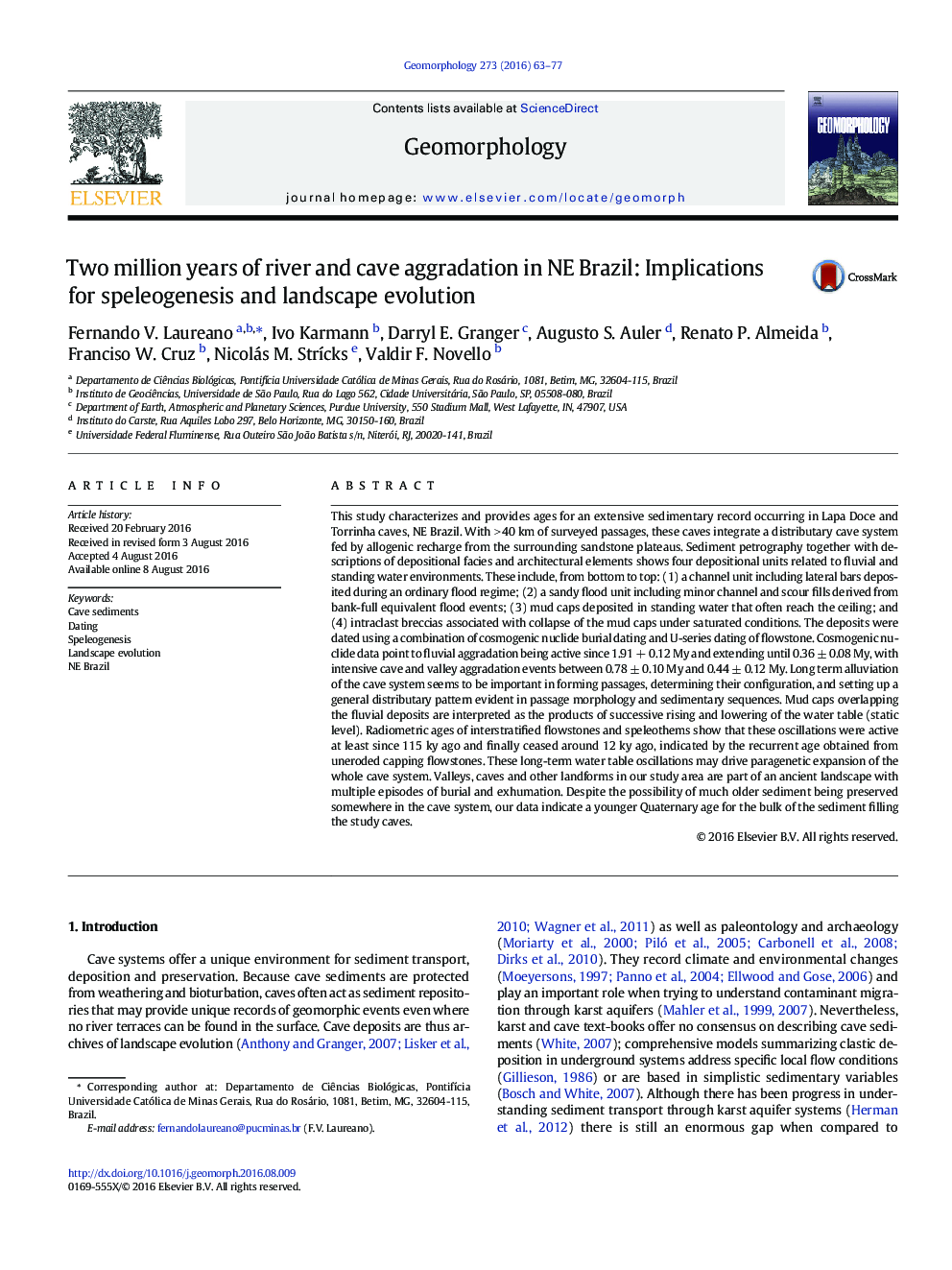| کد مقاله | کد نشریه | سال انتشار | مقاله انگلیسی | نسخه تمام متن |
|---|---|---|---|---|
| 6431560 | 1635376 | 2016 | 15 صفحه PDF | دانلود رایگان |

- A depositional model for the sedimentary infill found in the caves is proposed.
- Caves and surface stream aggradation active since 1.9Â My with an average denudation rate of 2Â m/My
- Fluvial aggradation intensified between 0.78 ± 0.10 My and 0.44 ± 0.12 My.
- Caves are part of an ancient landscape with episodes of burial and exhumation.
- Sedimentary data enhance discussions about speleogenesis: timescales and processes ordering.
This study characterizes and provides ages for an extensive sedimentary record occurring in Lapa Doce and Torrinha caves, NE Brazil. With > 40 km of surveyed passages, these caves integrate a distributary cave system fed by allogenic recharge from the surrounding sandstone plateaus. Sediment petrography together with descriptions of depositional facies and architectural elements shows four depositional units related to fluvial and standing water environments. These include, from bottom to top: (1) a channel unit including lateral bars deposited during an ordinary flood regime; (2) a sandy flood unit including minor channel and scour fills derived from bank-full equivalent flood events; (3) mud caps deposited in standing water that often reach the ceiling; and (4) intraclast breccias associated with collapse of the mud caps under saturated conditions. The deposits were dated using a combination of cosmogenic nuclide burial dating and U-series dating of flowstone. Cosmogenic nuclide data point to fluvial aggradation being active since 1.91 + 0.12 My and extending until 0.36 ± 0.08 My, with intensive cave and valley aggradation events between 0.78 ± 0.10 My and 0.44 ± 0.12 My. Long term alluviation of the cave system seems to be important in forming passages, determining their configuration, and setting up a general distributary pattern evident in passage morphology and sedimentary sequences. Mud caps overlapping the fluvial deposits are interpreted as the products of successive rising and lowering of the water table (static level). Radiometric ages of interstratified flowstones and speleothems show that these oscillations were active at least since 115 ky ago and finally ceased around 12 ky ago, indicated by the recurrent age obtained from uneroded capping flowstones. These long-term water table oscillations may drive paragenetic expansion of the whole cave system. Valleys, caves and other landforms in our study area are part of an ancient landscape with multiple episodes of burial and exhumation. Despite the possibility of much older sediment being preserved somewhere in the cave system, our data indicate a younger Quaternary age for the bulk of the sediment filling the study caves.
Journal: Geomorphology - Volume 273, 15 November 2016, Pages 63-77